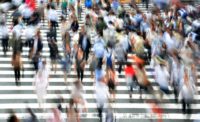The global market for city surveillance equipment surpassed $3 billion in 2017, and it’s expected to grow at an average annual rate of 14.6 percent from 2016 to 2021, according to a report from IHS Markit.
The report analysis notes that the primary focus on city surveillance projects is to help law enforcement address public safety and reduce crime, but the larger footprints of these projects produce more complicated risks and technical issues than other surveillance applications.
“System complexity, scale and use cases vary widely, depending on how much budget a city has available to invest in this type of technology. Large events, such as the 2008 Beijing and 2012 London Olympics and the Expo 2010 Shanghai, led to sizeable investment and spurred major development of surveillance systems in those cities. If city budget cuts become necessary, reducing the size and sophistication of a surveillance project — or delaying installation — is often the action taken,” the IHS Markit analysis says.
The market has also seen rapidly growing demand for video content analysis, especially facial recognition, in city surveillance projects.
According to a report from The New York Times, administrators at Madison Square Garden in New York City have been using facial recognition technology to help identify visitors, both for security and marketing purposes. The technology uses surveillance cameras to capture images of people, and then an algorithm compares the images to a database of photos to identify the person.





.jpg?height=200&t=1695306996&width=200)



